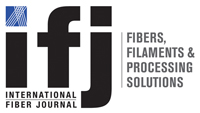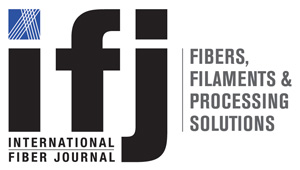Closing the Loop from Fiber to Fiber will Require Continuous Collaboration Across the Entire Textile Value Chain
Encouraged by a rising recognition of global environmental issues, the trend toward using recycled fibers from unwanted or second-hand textiles and clothing has been gaining traction, especially in countries looking to increase the ratio of recycled fibers used and limit the use of petroleum-derived synthetic fibers.
A growing number of fashion and home textile producers and retailers are developing products derived from recycled materials. For example, Wrangler, a U.S. manufacturer of jeans and other clothing items, particularly workwear, has launched the second collection of its Wrangler Reborn range made using upcycled denim, while British contract fabric and upholstery manufacturer Camira has developed a new version of its X2 flame-retardant upholstery fabric made using polyester derived from recycled materials.
And last year, Spain’s Zara collaborated with U.S.-based fashion technology company Circ to develop a capsule women’s collection produced using Circ lyocell made from 50% recycled textile waste. This follows Zara and Circ’s first collection, launched in 2023, which marked the use of garments made with recycled polyester and lyocell.
Other global apparel and footwear retailers have similarly collaborated to develop both collection/transport logistics systems and recyclable products, while investments and partnerships are beginning to appear for large-scale fiber-to-fiber and textile-to-textile recycling plants and initiatives.

Strict EPR Policies
The global textile recycling industry, however, continues to lag behind the plastics recycling sector. Many of the recently launched textile recycling initiatives have focused on collection. However, major issues need to be resolved in terms of the recycling process itself.
Several U.S. states and the EU have already enacted comprehensive and strict extended producer responsibility (EPR) policies that force manufacturers to handle their waste responsibly through recycling and reuse.
Despite this, most large- and full-scale textile recycling initiatives have yet to get much beyond demonstration-facility scale. Meanwhile, recycling centers have rapidly become inundated with collected waste fabric and garments; while transportation, identification, sorting and aggregation of textiles into garments into feeds containing the same fibers all add to the cost equation.
Mixed-Fiber Clothing
Mixed-fiber clothing poses significant recycling problems owing to the difficulty in separating different materials. Sorting remains a key bottleneck with blended fabrics being the norm in the clothing industry, which Refashion estimated to account for more than 60% of total post-consumer textiles in 2023. Further, most apparel contains other materials such as buttons, zippers and labels (usually made of polyester).
Especially problematic is the proliferation of hard-to-recycle elastane fibers that are becoming increasingly prevalent in fabric blends. In addition, the removal or fading of content tags has made it more difficult to accurately determine the fiber content of individual items destined for recycling.
Currently, less than 1% of textiles are recycled in a closed-loop back into new items, according to the Ellen MacArthur Foundation – the vast majority ends up as waste sent for landfill or incineration.
And with the global textile industry responsible for an estimated 6% – and rising – of landfill volume, recycling offers a circular material solution that can shrink this figure, as well as reducing water- and energy-intensive virgin manufacturing, and the pollution caused from dyeing and finishing new textiles.
Mechanical Recycling

Perhaps the easiest and most energy-efficient recycling process is mechanical recycling, where waste fibers are shredded and ground into similar lengths before being reused as a low-quality recyclate with limited end uses.
Andritz, a leading European textile machine builder, offers a range of component machinery for textile recycling, including shredding/tearing, cleaning, cutting, blending and baling.

These machines and processes have been combined with automated sorting equipment from Pellenc ST and are now operating as an industrial-scale production line in France for Nouvelles Fibres Textiles, founded by Les Tissages de Charlieu and Synergies TLC.
Meanwhile, Germany’s Trützschler Group and Balkan Textile Machinery of Türkiye have collaborated in the development of the Truecycled range of recycling machinery, from mechanical recycling to the spinning preparation of torn secondary fibers.
Trützschler now offers a complete system covering the whole process, from cutting and tearing textile waste through to carding and drawing secondary fibers. The new range was launched at the ITMA 2023 textile machinery event in Milan, Italy.
However, mechanical recycling is only part of the solution – on the downside it results in significant material loss and a shortening of the fibers, blending with virgin fibers is required to achieve high-quality yarns, and it cannot efficiently discriminate between synthetic fibers such as polyester and polyamide, for example.
In addition, post-consumer feedstocks are not available from mechanical recyclers in the required purity, leading to downcycled products such as materials for making insulation, industrial clothing or other lower-value uses.
Advanced Thermomechanical Recycling
Also launched at the last ITMA show was PureLoop’s ISEC evo FibrePro:IV machine for the recycling of polyethylene terephthalate (PET) continuous fibers and fabrics. The unit is fed with unshredded fiber waste from production processes. Beyond the shredder it passes in a controlled flow into the extruder and is filtered.
After extrusion, the melt is fine-tuned in the intrinsic viscosity optimizer to meet the requirements of the fiber industry. A fineness of 2 dtex is possible with 100% recycled pellet content, said PureLoop.
The company is a subsidiary of Austria-based Erema Group, which itself offers a range of plastics recycling solutions including systems for polymer-based fibers, nonwovens, tapes and textile fabrics.
Switzerland’s LIST Technology, specializes in high-viscosity processes for the fiber industry as well as other sectors, developing and manufacturing kneader-reactors. Part of Jakob Müller Holding, the company is developing recycling pathways for textiles, including cotton recycling with the lyocell process, PA6 recycling through depolymerization and the separation of textile blends such as polyester/cotton and mixed synthetics.
Meanwhile, the Omni recycling system from Germany’s Gneuss, for processing of industrial and post-consumer waste from all kinds of polymers, provides a high-quality output with excellent decontamination and a low carbon dioxide (CO2) footprint in a compact and smart design.
Automated Fiber Sorting Technology

When used textiles are collected, sorted and recycled in a closed loop, they can reduce the environmental impact of the textile industry and create a more profitable and resilient business model, according to Norway-based Tomra. Automated sorting and pre-processing – the removal of contaminants such as buttons, zippers and other fibers – are necessary to enable recycling and close the loop.
Over recent decades, the company has developed sensor-based collection and sorting solutions for plastics recycling. It is now committed to building on this technology by providing automated fiber sorting technology to bridge the gap between collected textile waste and the amount that gets recycled with emerging fiber-to-fiber recycling systems.
“The large variety in materials means robust sorting is required to enable advanced recycling processes with maximum recovery and value,” said Tomra’s senior solution manager Dr. Thilo Becker at last year’s Dornbirn Global Fiber Congress. “Multi-material garments can consist of mixed fibers, but also of inhomogeneous sections, such as polyester pockets in an otherwise cotton-rich textile item.”
Tomra’s sensor-based sorting and grading technology, which employs high-precision near-infrared (NIR) and visual spectrometry sensors, is used for the object-based sorting of textiles with heterogeneous input compositions. The company was the main technology provider for the world’s first fully-scaled automated textile sorting facility, SIPtex, established in Malmö, Sweden, in 2021.
Besides Tomra and Pellenc ST, automated sorting lines for textiles are also being manufactured by Picvisa of Spain and Valvan of Belgium, among others.
Valvan offers the Fibersort automatic textile sorting machine based on NIR technology and optimized with artificial intelligence technology to improve sorting based on such parameters as fiber composition, color composition, fabric structure and RFID tag information. Valvan’s Trimclean solution can then be used to remove trims such as labels, zippers, buttons and metals to prepare the textile stream for recycling processes.

Chemical Recycling
Chemical recycling, such as solvent dissolution, depolymerization, gasification and pulping, perhaps offers the only practical long-term solution, in conjunction with mechanical recycling methods, according to Parker Bovee, an associate in waste and recycling with Cleantech Group.
Solvent dissolution, as the name implies, involves the use of solvents to dissolve polymer fibers out of mixed-textile waste, particularly polyester/cotton blends, resulting in pure cotton and polyester fibers.
Depolymerization breaks down synthetic fibers such as polyester and polyamide into monomers that can be repolymerized into textile fibers. (PET bottles are frequently depolymerized and converted into polyester fibers for textile applications.) However, this method is less suitable than solvent dissolution for blended polyester/cotton textiles.
Gasification involves heating textile waste at high temperatures with CO2 as a gasifying agent to manufacture synthetic gas. This process is mainly used to convert highly contaminated or difficult-to-sort textile waste into fuel, energy and chemical products.
In the pulping process cellulosic fiber-based textiles are broken down into a pulp, similar to paper recycling. This technology is already at scale and is especially used for the production of viscose.
Removing Elastane from Polyamide Activewear
Elastane in particular can be difficult to separate out from other fabric materials. Now, researchers from Denmark have created a technology that can remove elastane from polyamide, a common fabric blend for figure-hugging clothing such as leggings and other activewear, shapewear and swimwear.
The links in the elastane chain are bound together by diamine molecules. Heating the clothing to 225°C and adding a specific alcohol was found to be a method to break down the bonds in elastane. As a result, the chains fall apart and the materials separate, explained Steffan Kvist Kristensen, an assistant
professor at the Interdisciplinary Nanoscience Center at Aarhus University.
Adding potassium hydroxide accelerated the process, which takes just over four hours, said Kristensen. So far, the research team has tested the method on up to two pairs of nylon stockings at a time, and it is still working to find ways to separate elastane from other materials such as cotton.
The technology is not quite there yet with cotton/elastane blends because some of the cotton fibers are broken down in the process. But the researchers believe that, with some minor adjustments, this problem can be solved.
They admit, however, that they have only tested the mixed-fiber recycling method at a small scale owing to the limitations of their equipment, and will need to work with facilities outside Denmark, such as chemical plants in Germany, which have the capacity to scale-up the process at an industrial level.
Currently, less than 1% of textiles are recycled in a closed-loop back into new items, according to the Ellen MacArthur Foundation – the vast majority ends up as waste sent for landfill or incineration.
Dry Fiber Technology
In a recent announcement, Japanese electronics company Epson has entered into a joint development agreement with the Hong Kong Research Institute of Textiles and Apparel to establish technology for “defibrating” hard-to-recycle fabrics.
A garneting machine is commonly used in the textile recycling process to separate the fibers in waste material. However, these machines are unable to effectively separate the fibers of some of the most common textiles in the apparel market, such as tightly woven fabrics used for dress shirts, bed sheets and elastic-blended fabrics used for denim and functional clothing, as well as from unused factory waste, unsold items of clothing and unwanted apparel. Epson aims to solve this problem by using its dry fiber technology to establish a process for defibrating such fabrics.
Reduce, Reuse, Recycle
While numerous ongoing recycling challenges remain, the need for continuous collaboration across the entire industry is evident in order to build a truly circular value chain for textiles, as is the need for new approaches to textile recycling investment, especially as recycled materials remain more expensive than virgin fibers and the global waste pile continues to grow to unprecedented levels.
Consumers can assist by choosing natural or cellulosic fibers, preferably designed in 100% mono-material form, buying fewer clothes, and repairing or reusing garments and other textiles. Supporting sustainable brands and advocating for better national recycling policies will also help.


